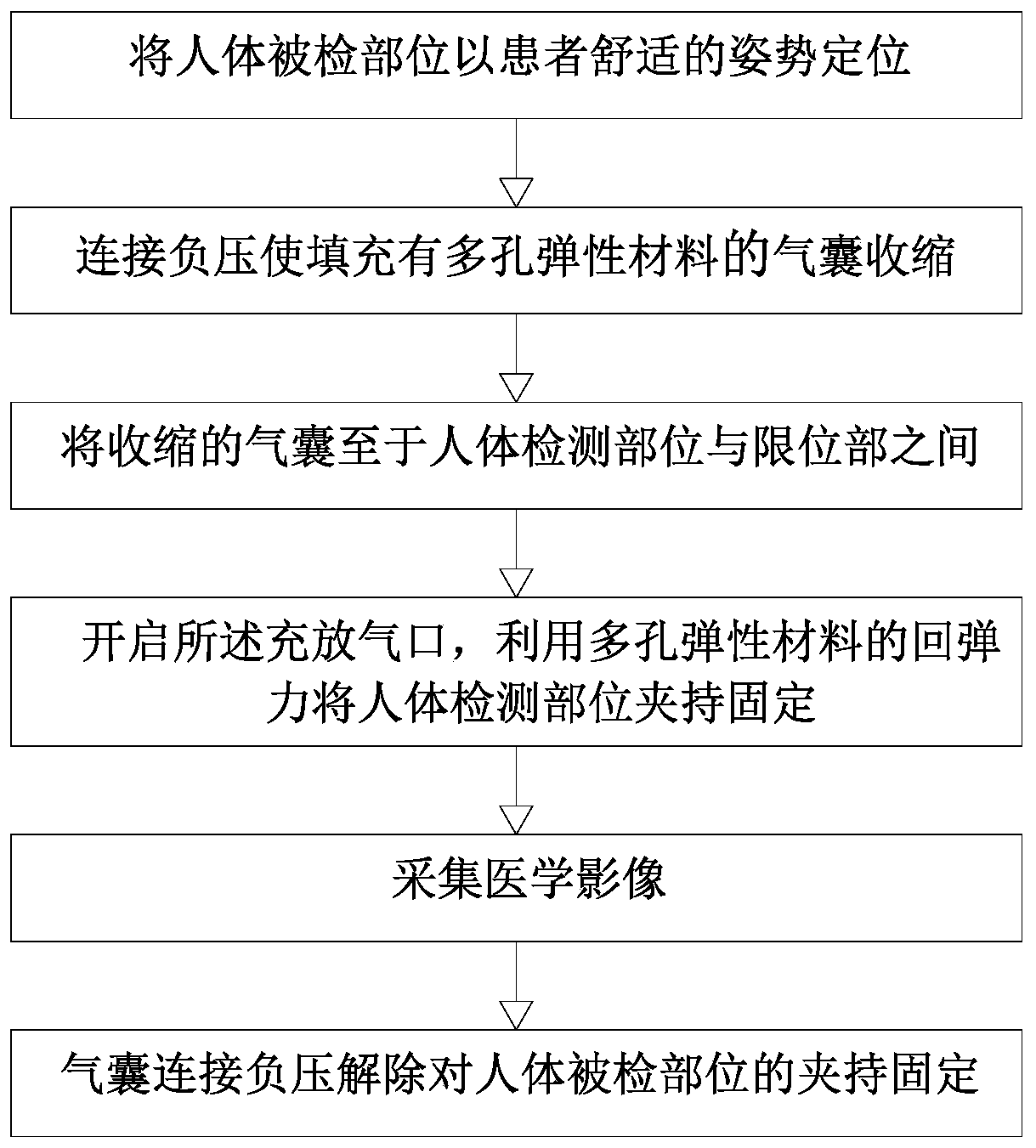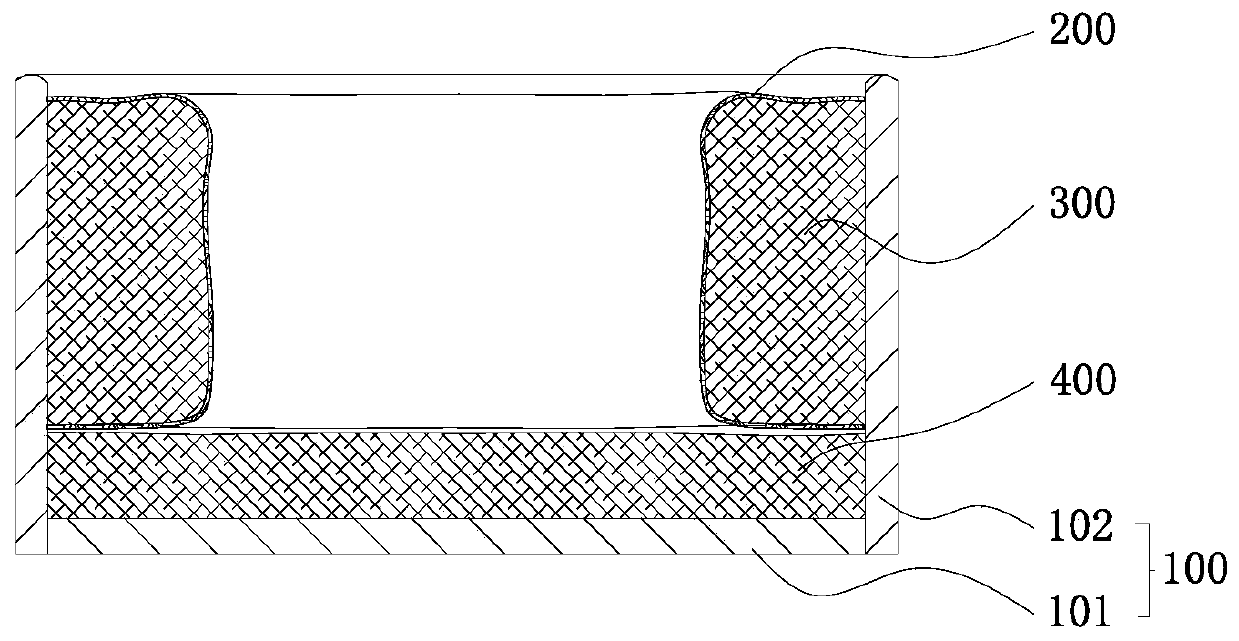Method and device for improving stability of examined part in medical image examination process
A technology of medical imaging and inspection process, which is applied in medical science, patient positioning for diagnosis, and equipment for radiological diagnosis, etc. Clamping and other problems, to achieve the effect of firm fixation, high safety and convenient operation
- Summary
- Abstract
- Description
- Claims
- Application Information
AI Technical Summary
Problems solved by technology
Method used
Image
Examples
Embodiment 1
[0041] Embodiment 1: A method for improving the stability of the inspected part in the process of medical image inspection.
[0042] Such as figure 1 As shown, this embodiment provides a method for improving the stability of the inspected part in the process of medical image examination, by fixing the inspected part of the human body in an adaptive fixation manner; and then collecting the medical image. The adaptive fixation method refers to the use of deformable substances to fit and squeeze the fixed object based on the shape of the fixed object, so as to form a contact surface specific to the contour of each fixed object, so the pressure is more uniform , higher comfort, and more secure fixation. Specifically, the method of adaptive fixation includes: step 1, positioning the human body to be tested in a comfortable posture for the patient; step 2, using a device capable of generating adaptive deformation to clamp and fix the human body to be tested. The final clamping and...
Embodiment 2
[0047] Embodiment 2: A device for improving head stability during medical imaging examination.
[0048] Such as figure 2 and image 3 As shown, the device includes: a support shell 100, an airbag 200 and a porous elastic material 300; the support shell 100 includes a base plate 101 and a U-shaped plate 102 vertically installed on the upper surface of the base plate 101, and the support shell 100 can communicate with medical imaging equipment through the base plate 101 Connect to play the role of connection and fixation; the airbag 200 is U-shaped, the outer surface of the airbag 200 is connected with the inner surface of the U-shaped plate 102, and the expansion of the airbag 200 occupies the inner space of the supporting shell 100, which can clamp the part to be tested. The airbag 200 is provided with an inflation and deflation port 201 to realize the discharge and filling of gas inside the airbag 200; the porous elastic material 300 is filled in the airbag 200, and the por...
Embodiment 3
[0051] Embodiment 3: A device for improving trunk stability during medical imaging examination.
[0052] Such as Figure 5 and Figure 6 As shown, compared with Embodiment 2, the main difference lies in the change of the shape of the supporting shell 100 and the arrangement of the airbag 200 . The supporting shell 100 includes a base plate 101 and two side plates 103 vertically installed on the upper surface of the base plate 101 , and airbags 200 are respectively installed on opposite surfaces of the two side plates 103 .
[0053] Such as Figure 7 As shown, when in use, the patient raises his arms and lays his body on his back. The torso is located between the two side panels 103. After the inflation and deflation port 201 is opened, the airbags 200 bulge from the left and right sides and fit the left and right sides of the patient's torso. achieve a fixed effect.
PUM
 Login to View More
Login to View More Abstract
Description
Claims
Application Information
 Login to View More
Login to View More - R&D
- Intellectual Property
- Life Sciences
- Materials
- Tech Scout
- Unparalleled Data Quality
- Higher Quality Content
- 60% Fewer Hallucinations
Browse by: Latest US Patents, China's latest patents, Technical Efficacy Thesaurus, Application Domain, Technology Topic, Popular Technical Reports.
© 2025 PatSnap. All rights reserved.Legal|Privacy policy|Modern Slavery Act Transparency Statement|Sitemap|About US| Contact US: help@patsnap.com



